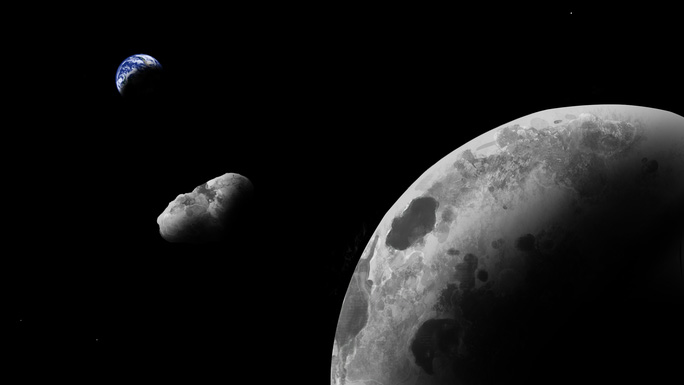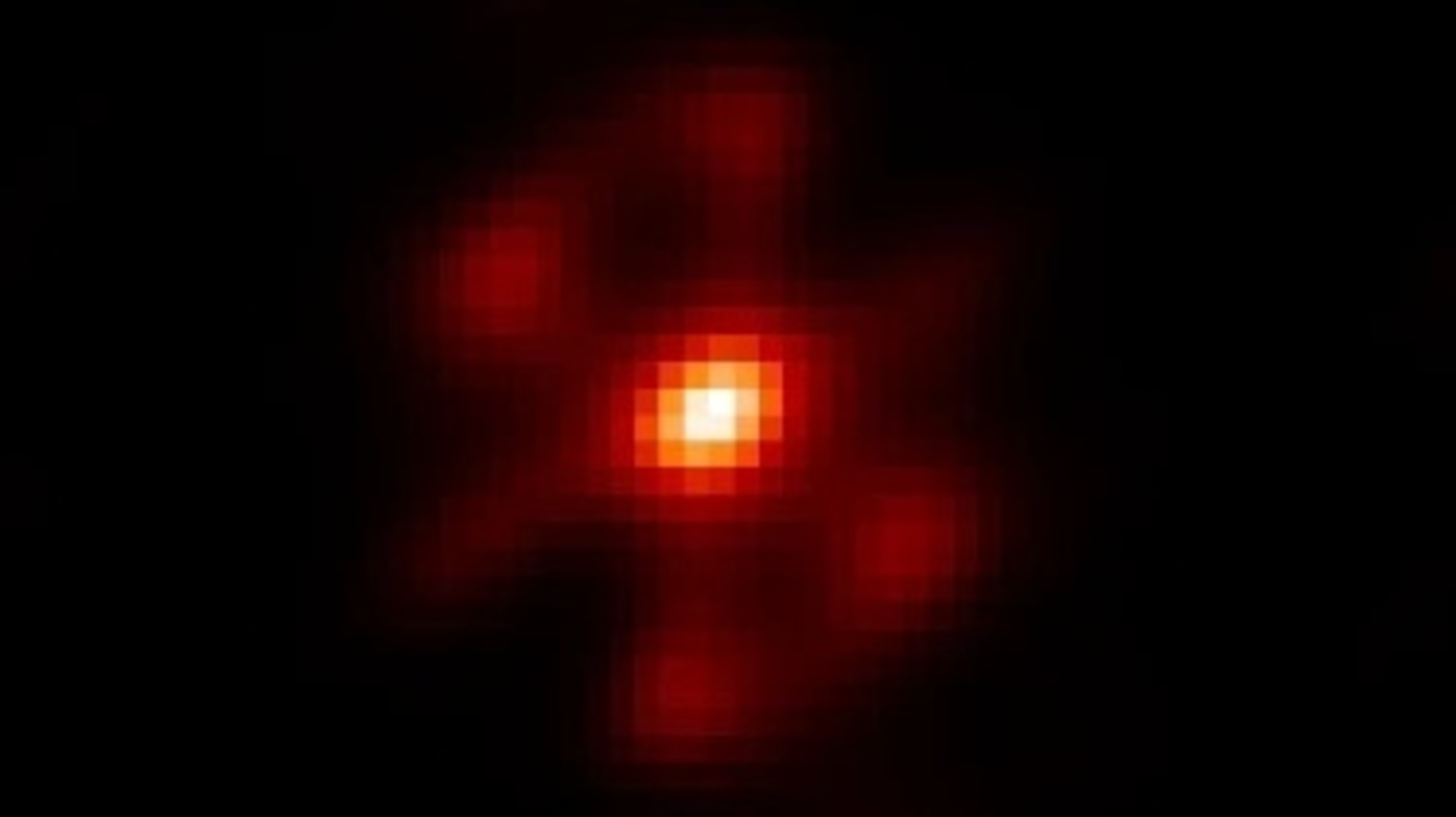A 'quasi-moon' asteroid companion of Earth that may actually be a moon relic
"We couldn't believe it. It was unlike anything we've seen before."

A mysterious object near the Earth is the first known space rock made of what looks like a piece of the moon, a new study reveals. It may, in fact, have split off the moon in an ancient collision with an asteroid.
The space rock, called Kamo'oalewa, was discovered in 2016. It has been the target of study by Vishnu Reddy, an associate professor in cosmochemistry and planetary astronomy at the University of Arizona, and his PhD student Benjamin Sharkey.
Reddy regularly studies space rocks discovered in the vicinity of Earth for NASA's Planetary Defence Coordination Office, which keeps track of space-based dangers. Kamo'oalewa, however, had resisted his attempts to analyze its composition for several years.
When Sharkey showed Reddy his latest observations of the elusive space rock, the two couldn't believe their eyes.
"We couldn't believe the way it was looking because it was unlike anything we've seen before," Reddy told Space.com.
The results, Reddy said, didn't match any of the known more than 2,000 near-Earth asteroids analyzed before.
Related: DART asteroid mission: NASA's first planetary defense spacecraft
Breaking space news, the latest updates on rocket launches, skywatching events and more!
Like Apollo samples
Kamo'oalewa was too small and too distant for the telescopes Reddy normally relied on in his work. Sharkey, who previously studied the moons of distant giants Uranus and Neptune, found more powerful telescopes to learn about this peculiar rock.
Sharkey used the Large Binocular Telescope, one of the largest optical telescopes in America, and the infrared Lowell Discovery Telescope, to look at how Kamo'oalewa reflects light, which reveals what the rock is made off.
What they found was surprising. The Kamo'oalewa observations had light spectra similar to those of samples of lunar material brought to Earth by the late 1960s and 1970s Apollo missions.
"The spectral properties of this object look very similar to that of the moon," Sharkey told Space.com. "It's not that there couldn't be other asteroids [with such spectra], but we haven't found anything so far that looks similar to it."
A quasi mini-moon
Kamo'oalewa is what astronomers call Earth's quasi-satellite — a space rock that circles the sun in an orbit so similar to that of the Earth that it constantly stays close to the planet. Since the orbit of Kamo'oalewa is slightly more tilted and slightly more elongated, the rock constantly leaps slightly ahead and falls slightly behind the planet, essentially performing constant loops around it.
At its nearest, the 130-foot-wide (40 meters) asteroid gets to the distance of about 40 times that of the moon. Results of orbital analysis suggest it has been accompanying Earth for at least 100 years. This long-term presence in Earth's vicinity makes Kamo'oalewa stand out among the known quasi-satellites.
"We've known quasi-satellites of Earth before, but they're very, very short-lived," said Reddy. They don't stick around too long. They are gone in a matter of months to a couple of years."
Split off the moon?
This permanent closeness to the planet (and its moon by that matter) led the scientists to suggest that Kamo'oalewa's similarity to the moon samples may not be coincidental.
"If you look at the moon through a telescope, you see thousands of craters, " said Reddy. "The material ejected during these impact events should be all over the place. But nobody has found it so far."
More than 480 lunar meteorites have been found on Earth, Reddy added, suggesting that pieces of the moon travel through space quite frequently. Kamo'oalewa may as well be the first discovered large space rock split off from the moon in one of the ancient collisions.
Sharkey and Reddy may soon learn whether their hypothesis is right. China plans to launch a mission that will attempt to collect a sample from Kamo'oalewa in 2024 and bring it to Earth soon after.
The study was published in the journal Communications Earth & Environment on Thursday (Nov. 11).
Follow Tereza Pultarova on Twitter @TerezaPultarova. Follow us on Twitter @Spacedotcom and on Facebook.

Tereza is a London-based science and technology journalist, aspiring fiction writer and amateur gymnast. Originally from Prague, the Czech Republic, she spent the first seven years of her career working as a reporter, script-writer and presenter for various TV programmes of the Czech Public Service Television. She later took a career break to pursue further education and added a Master's in Science from the International Space University, France, to her Bachelor's in Journalism and Master's in Cultural Anthropology from Prague's Charles University. She worked as a reporter at the Engineering and Technology magazine, freelanced for a range of publications including Live Science, Space.com, Professional Engineering, Via Satellite and Space News and served as a maternity cover science editor at the European Space Agency.
